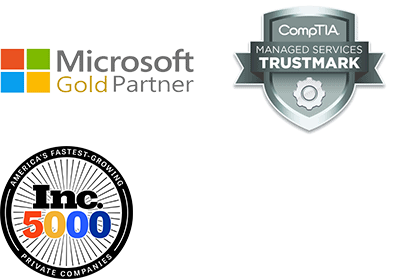If you don’t use it – you lose it. That’s your IT Budget we’re referencing. And with extra IT budget as year-end approaches comes the exciting opportunity to implement low-cost, high-impact IT strategies for your company.
Whether you’re mulling over how to spend your end-of-year IT dollars or are planning for next year, make sure that these 10 things are in your IT budget:
- Security. Surprisingly, security is often overlooked in the IT budget, particularly in small businesses where they believe they are not really at risk. Unfortunately, this is not the case – and not maintaining security can be extremely costly.
- End of life. When Windows XP went end of life more than 2 years ago, many companies scrambled to update their operating systems, despite the many announcements leading up to the termination. Make sure that you know when different software or operating systems need to be replaced.
- Mobile device management. Everyone is using mobile devices to carry out some of their duties. Even if it is just email, this is a growing issue that must be managed and taken seriously, as it can pose serious threats to your environment.
- Proactive IT planning. Your IT budget must include technology that can help you achieve business objectives, improve productivity or cut back on costs. Keeping a strategic eye on technology can help your company continue to advance its goals instead of being reactionary.
- Strategy for your hybrid cloud. Cloud options often confuse companies and they don’t know how to plan for the costs associated with it. It’s essential to know what cloud options you should be using and budget accordingly.
- Human resources management. There are several software options that can manage benefits, applications, onboarding and other aspects of HR. This frees up your HR to focus more on building programs that take care of your employees.
- Training. Some technology doesn’t come easily to your team. Assess the technology you possess and identify where training needs to happen. This is very often overlooked, but as employees struggle with unfamiliar applications or technology, their productivity will take a nose dive.
- Disaster recovery planning. From backups to recovery, there are several aspects of disaster recovery that you need to plan for. Look for newer options to outdated backup and recovery models. For example, if you’re still using backup tapes, try to budget to replace those.
- Hardware consolidation. Are you running too much hardware? You could virtualize some of it and condense your equipment. Reduce the equipment you have onsite, and you reduce the chance of equipment breaking and you lower your power usage and square footage.
- Self-Service IT options. Your IT strategy should accommodate opportunities to alleviate the stress on your existing IT team. Often, IT is understaffed and spends a lot of time on low-level maintenance or administrative tasks than on the higher IT priorities. Self-service options can help alleviate their workload.
With these 10 must-haves for your IT budget, chances are slim that you’ll find yourself with anything burning a hole in your pocket. In fact, you just might find yourself with an even bigger budget the next time around.
Need help deciding what your IT budget priorities should be? Contact us at (608)729-1300 or sign up below.





